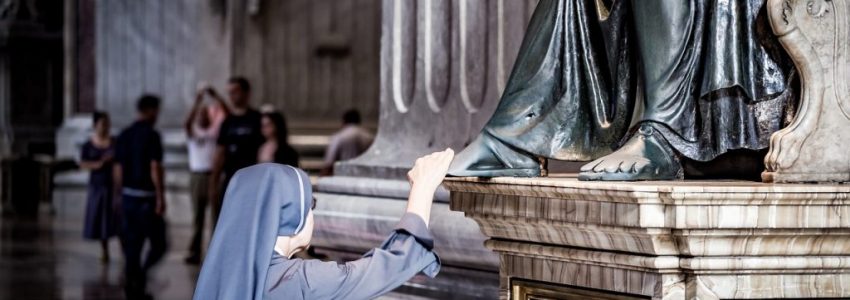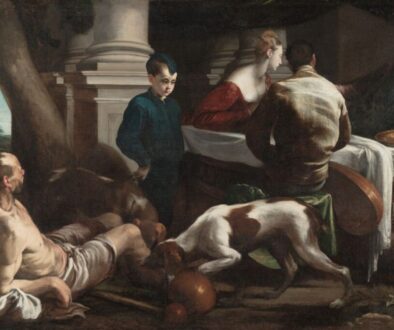The Incorruptible Saints of the Catholic Church

Published October 17th, 2019
The veneration of saints is one of the Catholic church’s long-standing traditions. Throughout its history, many faithful were conferred sainthood. But only a few of them are “incorruptible”, a word that refers to the undecayed state of a saint’s body years (and centuries!) after their death.
In a normal death process, rigor mortis would set in hours after someone died. The body would then start decomposing until all that remained of it are bones or bone fragments.
The bodies of these saints, however, stayed intact. Some even look so lifelike that it would seem as if they’re just sleeping. This phenomenon has baffled medical experts for years. Yet, no one has come up with a plausible scientific explanation.
To Catholics, this unexplainable incorruptibility is further proof of their sanctity. It means that they are now in communion with God and their incorruptible mortal shell attests to it.
Incorruptible vs. Preserved
What most people don’t understand is that not all undecayed bodies can be called “incorruptible”.
There are three explanations for non-decomposition: accidental preservation, deliberate preservation, and incorruptibility.
Accidental preservation is when the burial conditions of the body accidentally keep it from decomposing. A good example of this would be those bodies buried in hot, dry sand. This prevents moisture from seeping into the body, thus keeping it from total decay. Corpses that got preserved this way are usually discolored, wrinkled, and stiff when discovered.
Meanwhile, deliberate preservation usually involves pre-burial treatments with an intent to prevent decomposition. A common example is the mummification method used by ancient Egyptians. Like the accidentally preserved bodies, these corpses look more like a skeleton than an actual body.
Incorruptible bodies, on the other hand, don’t look like corpses. First-hand accounts state that these bodies remained soft and have maintained their coloring. This is despite their decay-inducing burial conditions. Some incorruptible saints were buried without a coffin or near other decaying corpses.
The corpses of these incorruptible saints are also reported to give off a sweet-smelling flowery scent. First-hand witnesses usually refer to it as the “scent of heaven”. Many of them also emit a strange clear oil that oozes from the body long after it’s buried.
Pre-19th Century Incorruptible Saints
St. Rita of Cascia
Often portrayed with a bleeding wound on her forehead, St. Rita of Cascia has suffered from stigmata while still alive. When she died in 1457, a red, fragrant mark in the shape of a rose replaced the stigmata wounds. Her incorruptible body is now interred in the Basilica of Cascia in Italy.
Mary of Jesus of Agreda
A Franciscan abbess and a spiritual writer, Mary of Jesus of Agreda was also a famous mystic in 15th century Spain. She was also notable for her bilocation between Spain and its colonies in South America.
When they opened her casket in 1909, they discovered that her body did not decay. Another examination conducted in 1989 found that her body’s condition remained as that of 80 years ago.
Saint Zita
Saint Zita worked as a domestic servant in 13th century Italy. She considered her job as employment given to her by God and had served her masters faithfully. Because of this, she is often referred to as the patron saint of maids and domestic servants.
Upon her death, it is said that a star appeared in the attic where she slept. Her incorrupt body is now on display in the Basilica di San Frediano in Lucca, Italy.
Saint Teresa of Avila
A prominent Spanish mystic of the 16th century, Saint Teresa of Avila was one of the founders of the Discalced Carmelites. She has also authored many books, and Pope Paul VI declared her a Doctor of the Church. (Related: Inspirational Quotes from Saints for Young Catholics)
Because of her popularity, there were concerns that someone might try to steal her body from the grave. To prevent this, they heaped on more dirt and rubble on her coffin. When they exhumed her body months later, they found that the lid of the coffin had caved in. Despite this, the body remained fresh and supple as the day she died. It was also emitting a sweet fragrance unlike any they’ve smelled before.
In 1914, they exhumed her body again and found that it remained as white and smooth as alabaster.
(Related: St. Bridget’s Twelve-Year Prayer)

Modern Incorruptible Saints
Saint Bernadette of Lourdes
Even as a young child, it seems that St. Bernadette was already destined for a holy life. She witnessed the apparitions of a “lady” who identified herself as the Immaculate Conception.
She entered the convent at a young age and has suffered from various illnesses all throughout her life. In 1879, her illnesses got the better of her and she died at the young age of 35.
Over the next 48 years, they exhumed her body at least three times. And in each exhumation, her body showed no signs of decay. Her skin tone remained perfectly natural. Even her liver remained intact almost a century after her death.
St. John Bosco
Losing his father at a young age, St. John Bosco was instructed by a parish priest. Thus, it is no surprise that he too became one.
In 1859, he founded the Society of Saint Francis de Sales. They are known for helping street children and providing instruction to the poorest of the poor.
He died in 1888 and when they exhumed his body in 1934, they found that it has not decomposed. His incorruptible body now lies in the Basilica of Mary Our Help in Turin, Italy.
St. Catherine Laboure
A Marian visionary, St. Catherine Laboure’s vision was the basis of the Miraculous Medal of Our Lady of Graces. She was also a member of the Daughters of Charity of St. Vincent de Paul.
St. Catherine spent her whole monastic life caring for the aged and infirmed. She died in 1876 at the age of 70. Fifty-seven years later, they opened her tomb and found that her body did not decay. A detailed medical examination of her remains concluded that her body is in a perfect state of preservation and that the joints are still supple.
Her incorruptible body now lies in a glass coffin in the Chapel of Our Lady of the Miraculous Medal in Paris.
Seek a Deeper Connection with God and Join Lay Cistercians of South Florida
Lay Cistercians of South Florida, is a community of lay people who seeks to have a deeper connection with God by living a life inspired by the monks and nuns through Lay Monasticism. Learn more about what is a Lay Cistercian on our website. Anyone who aspires to do the same as us, and is a confirmed Catholic is welcome to join us! We meet every second Saturday of the month at Emmanuel Catholic Church in Delray Beach, Florida.

This Content Has Been Reviewed For Accuracy
This content has undergone comprehensive fact-checking by our dedicated team of experts. Discover additional information about the rigorous editorial standards we adhere to on our website.

About The Author
Judy Ponio is a professional writer for the Lay Cistercians blog and a devoted Catholic. She works hard to ensure her work uses accurate facts by cross checking reputable sources.




